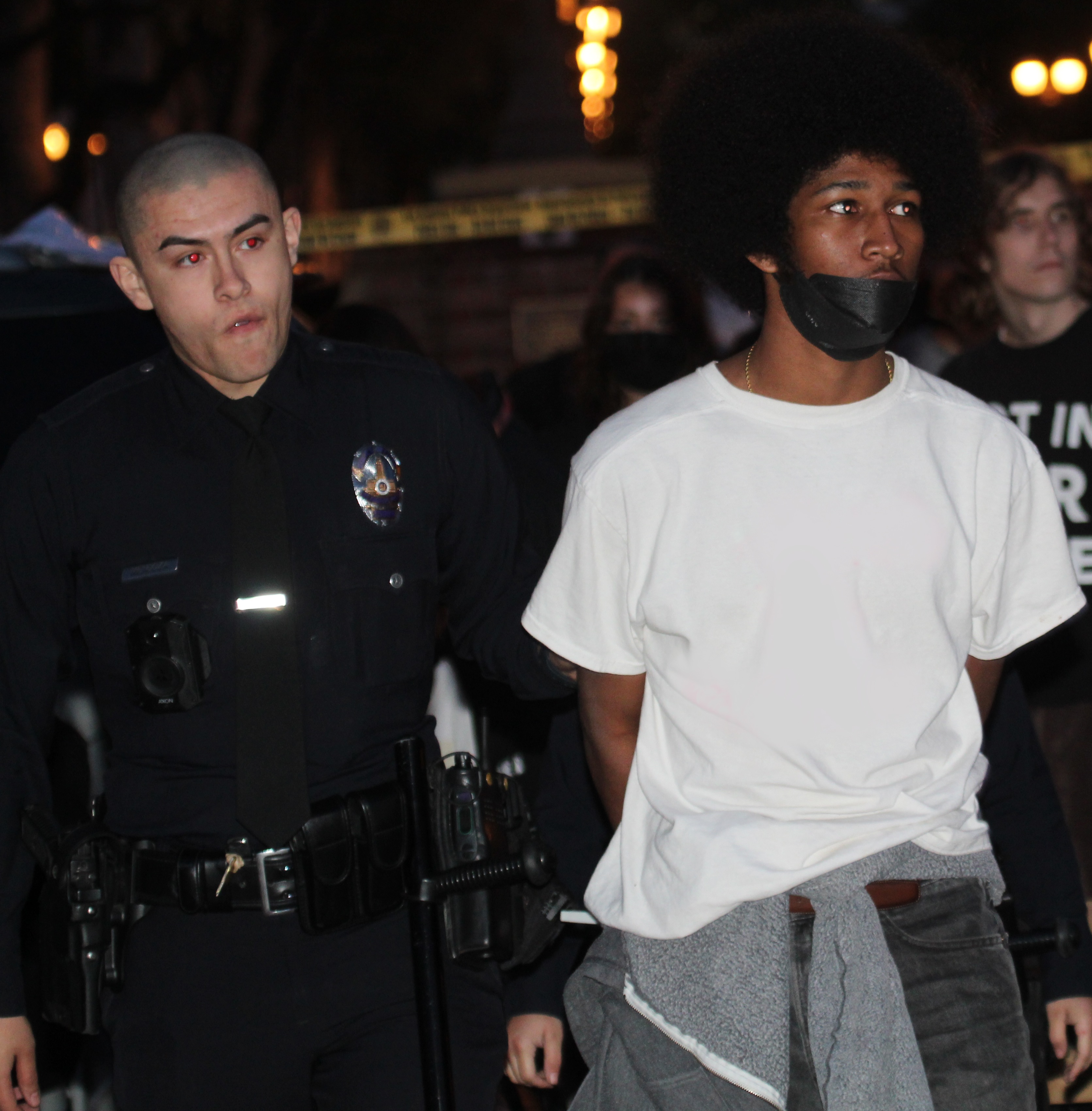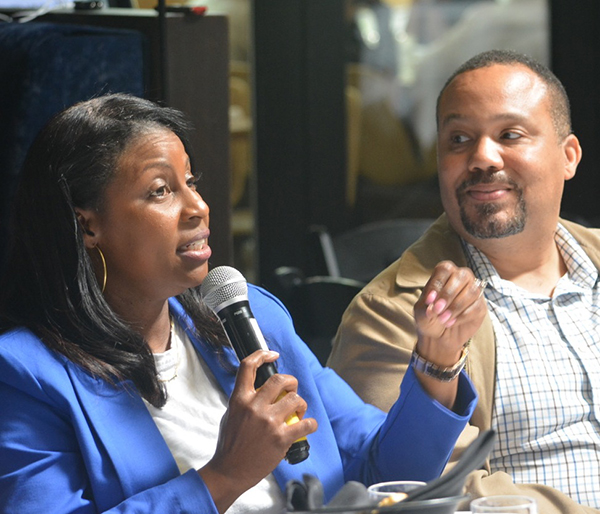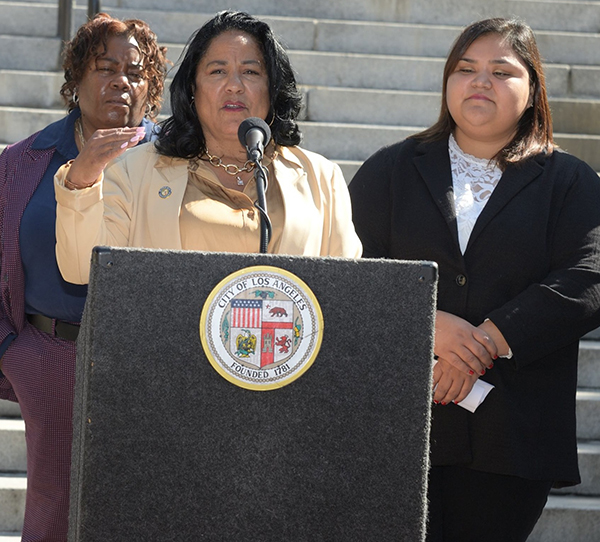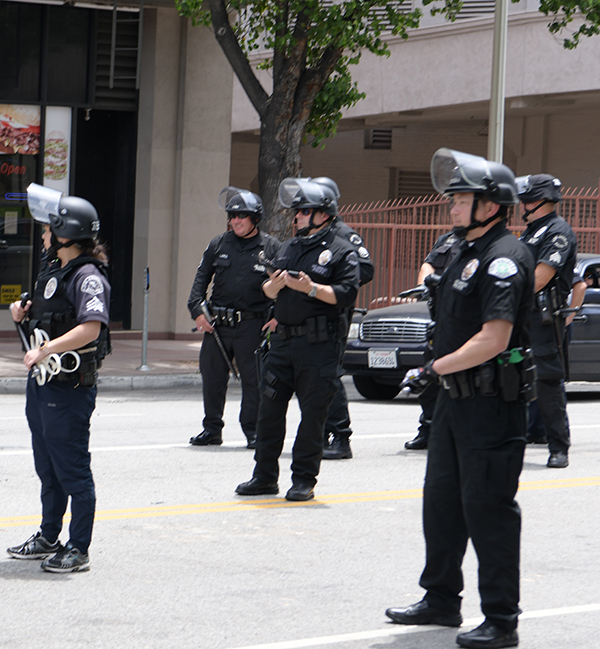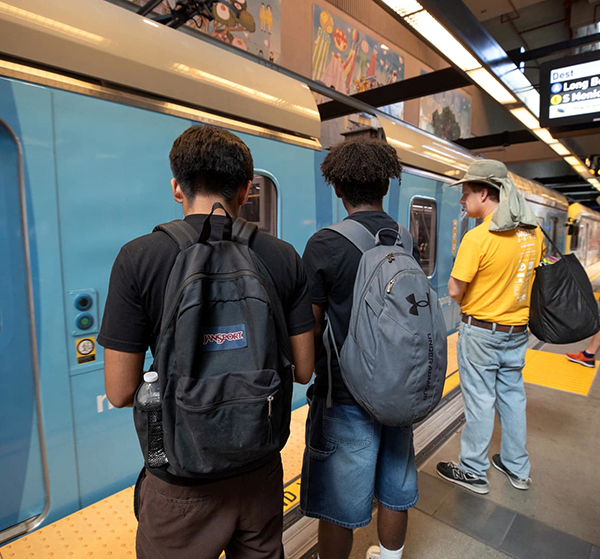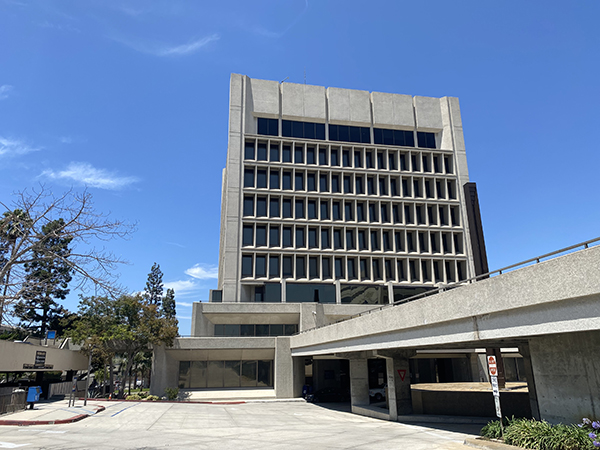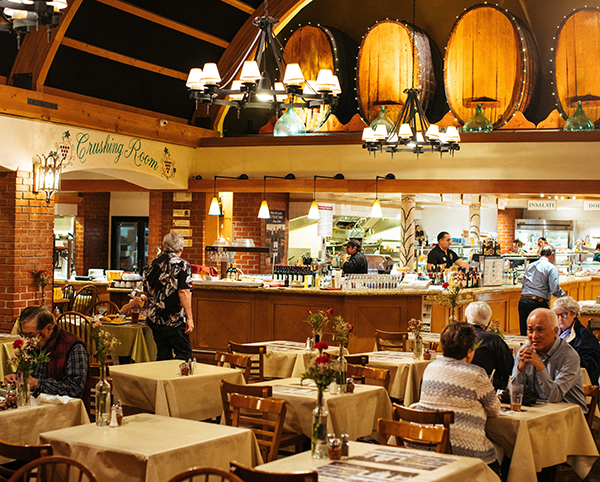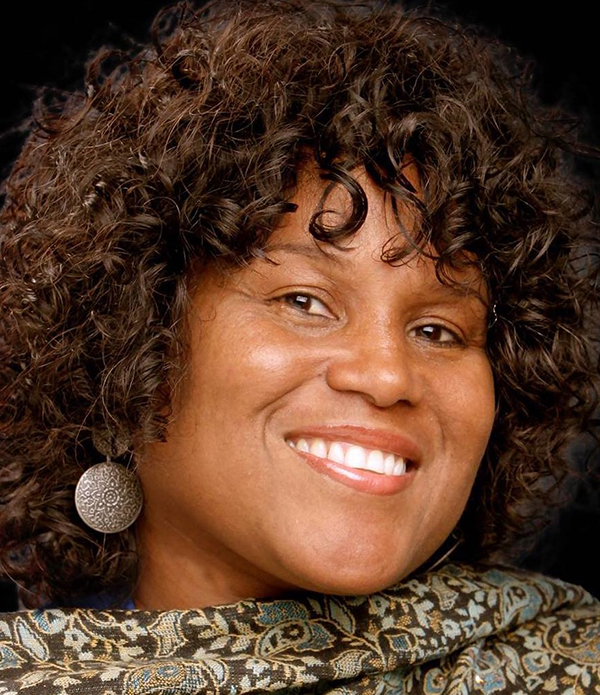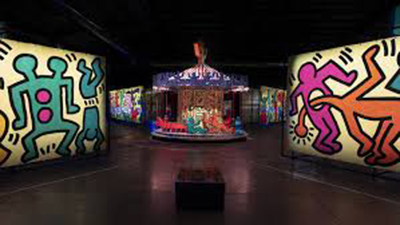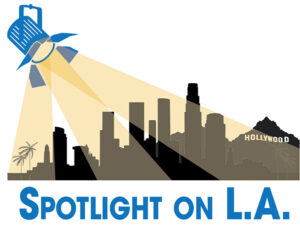
By Darlene Donloe
Contributing Writer
The San Antonio Winery, located a couple of blocks off North Main Street in a quiet industrial area in downtown Los Angeles, is a family-owned establishment where wine enthusiasts have long enjoyed libations by the glass or the bottle.
The family-owned winery, founded by Santo Cambianica, an Italian immigrant in 1917, has plenty of offerings for non-imbibers as well.
For those who would rather bypass the tasting room and the wine tours, there is a gift shop and Maddalena restaurant, located inside the winery, which offers dining among century-old redwood aging casks.
Eventually, the winery was passed down to Stefano Riboli and his wife, Maddalena Riboli, and then to a third generation of Ribolis that includes Santo Riboli, Cathy Riboli and Steve Riboli.
Owned and operated by several generations of the Riboli family, San Antonio Winery, the maker of Stella Rosa wines and the oldest and largest producing winery in L.A., has become a popular destination for wine lovers.
An essential component of the city’s cultural and historical landscape, the winery, designated Cultural Monument Number 42 by Los Angeles’ Cultural Heritage Board in the early 1960s, is still located at its original location on Lamar Street.
Steve Riboli, a married father of five is the president and CEO of San Antonio Winery.
In order to effectively run the family business, Riboli, 62, who grew up in Lincoln Heights, studied business economics at UC Davis.
I recently asked Riboli about his family business.
DD: Talk about your day-to-day duties as the president and CEO.
SR: Earlier this year, I took on the role of president and CEO. My brother, Santo Riboli, former president and eldest of the third generation, moved into the role of chairman of the board. In my new role, I’m responsible for executive decisions and strategic vision across all brands including Stella Rosa, the No. 1 import brand and the largest selling brand over $10 in the U.S.; Riboli Estates Group, a portfolio of wines based in Paso Robles, Monterey, and Napa Valley, as well as the Avanti division, which showcases distinctive growing regions around the world.
Each day is different. On any given day I could be developing new products or finalizing packaging. There are always moving parts in our family business. … It could be as small as a new menu item in our tasting room, as routine as an executive meeting, or as big as market research trips to make sure we’re bringing each consumer and buyer what they need.
DD: You are part of the third generation of Riboli family members. What did you learn from the second generation that you will be sure to teach the fourth generation?
SR: Hard work and resilience. To keep a family business afloat, you need to dedicate time and hard work to it every day. I’m always working toward our goal of being successful but life happens and it is important to stay focused and resilient.
DD: Is there a fifth generation waiting in the wings?
SR: Hopefully! We feel strongly about keeping the business in the family and would love for each generation to learn the ropes and take over someday. Each Riboli family member maintains a steadfast commitment to honoring our craftsmanship of wines and making it even better. As my dad used to say, “It was always about working harder to leave something for the next generation.”
DD: If you have children, are they involved in the business? How would you feel if they didn’t want to be involved in the family wine business?
SR: Yes, my children are involved in the family wine business. They each take on a different and critical role in the business, always learning from mistakes and growing in their roles and beyond.
DD: What is your earliest memory of being introduced to the family business?
SR: I was 4 years old handing out samples of wine with my dad to our customers at our San Antonio Winery tasting room in Los Angeles.
DD: What was your first job in the family business?
SR: When I was only 8 years old, I was giving historic tours of the wineries to customers. I thought I did it pretty well but I was constantly learning how to perfect the tour.
DD: To what do you attribute the winery’s popularity?
SR: Our winery holds a sense of community for the Downtown Los Angeles and Lincoln Heights neighborhoods. We have multi-generational visitors regularly who used to come with their parents and now bring their kids. We are also an urban winery so visitors or even residents looking for escapism get to feel like they’re wine-tasting in the heart of Los Angeles.
DD: Why should someone patronize the San Antonio Winery?
SR: We are authentic to Los Angeles and our brands are authentic to today’s consumer, evolving with the times but staying true to our roots.
DD: What sets your wine apart from other California wines?
SR: We’re an estate-grown company from dirt to production and we take a lot of pride in understanding new techniques in our vineyards — farming, sustainability and bio-dynamics.
DD: Talk briefly about the winery tours, wine tastings and what visitors can expect. Also talk about Maddalena Restaurant, The 1917 Wine Bar & Bistro. What is the most popular area of the winery?
SR: When visitors come to our winery they can expect a historic experience. San Antonio Winery has stood where it is today since 1917. This detail is a part of the experience from the moment you walk in. You’ll find our original barrels outside the winery, which are a great parallel to our newest addition: The 1917 Wine Bar & Bistro. It showcases where we started and where we are today.
Our tours are led by staff who have been with us for years and feel very passionately about sharing our family’s legacy. Patrons are guided through our winemaking facility, bottling facility and historic event spaces as well as a guided wine tasting experience.
DD: What is your favorite wine or vintage that you make and why?
SR: I enjoy white wine and I really love drinking our Chardonnays and Sauvignon Blanc, especially in this California heat.
DD: Why and how has San Antonio Winery been able to maintain its place as the largest producing winery in Los Angeles?
SR: From the beginning, our family was resilient. We opened our doors in 1917, shortly before prohibition, and survived that era through faith and courage. Since then, we’ve experienced many historic events and changing generations that could affect our business but have only made us stronger. We continue to evolve with the times and aren’t afraid to innovate.
DD: For someone who has never been to the winery, describe the experience.
SR: We like to think the experience is like escaping to Italy, the roots of our family and culture. We’ve worked hard to be a historic landmark of Los Angeles and do our best to bring our customers the experience they’re looking for, whether that is an educational or fun wine-tasting experience or an authentic Italian meal.
DD: What is it that people who are not in the wine business don’t know about the wine business?
SR: It’s extremely difficult. Not only does it change by vintages, but the consumer’s palates are constantly changing and we have to be evolving constantly. In our portfolio, you’ll find sweet wines like San Antonio Cardinale or Stella Rosa but also big, bold wines like San Simeon, Maddalena and Highlands 41.
San Antonio Winery has three locations: Los Angeles, Ontario, and Paso Robles. The local address is 737 Lamar St., phone 323-223-1401.
Darlene Donloe is a freelance reporter for Wave Newspapers who covers South Los Angeles. She can be reached at ddonloe@gmail.com.

